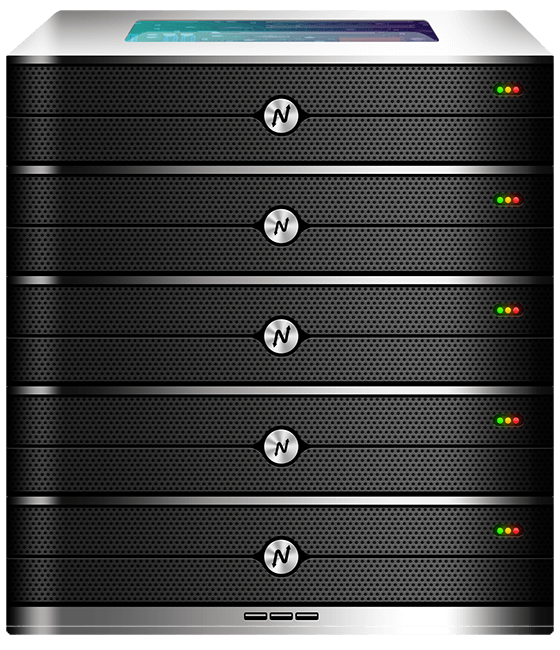When your team needs reliable, browser-based email access, a webmail app is a practical and flexible choice. A webmail app gives users access to email from any device with a browser, removes client installation overhead, and simplifies administration for IT teams. For global businesses, selecting the right hosting environment and configuration for your webmail app makes the difference between smooth daily operations and frustrating downtime.
Indian data centers have matured rapidly and now offer high-performance infrastructure that is cost-effective, secure, and scalable. Choosing Indian servers for your webmail app can reduce costs, lower latency across Asia, and still provide competitive response times worldwide. Indian hosts also emphasize compliance and robust security practices, which are critical for email systems that carry sensitive information. Whether you manage email for a startup or a multinational, this webmail app guide will help you select the right plan, understand security best practices, and troubleshoot common issues.
- 1 Website Host
- 15GB SSD Storage
- 100GB Bandwidth
What is a Webmail App and Why It Matters
A webmail app is a browser-based interface that lets users send, receive, and manage email without installing desktop clients. Examples include roundcube-style interfaces and modern, responsive single-page apps. The convenience of a webmail app lies in instant accessibility, centralized updates, and easier support for administrators.
For businesses, a webmail app reduces the need to configure mail clients on multiple devices and enables consistent security policies like enforced TLS, password rules, and two-factor authentication. From a developer perspective, webmail apps expose APIs and can be integrated with calendaring, contact sync, and corporate directories.
Choosing a good webmail app improves productivity and reduces helpdesk tickets. Performance depends on server resources, mail server configuration (SMTP, IMAP/POP), and storage performance. This guide explains hosting choices, security hardening, and real-world use cases so you can deploy a reliable webmail app that serves users globally.
How to Choose the Right Hosting Plan for Your Webmail App
Choosing the right hosting plan is a foundational step for any webmail app. Email workloads differ from typical web workloads because they include persistent IMAP/POP connections, frequent small I/O operations, and storage that must handle many small files and attachments. A mismatched plan can cause slow message retrieval, delayed delivery, or even data corruption.
For a small team or startup, Shared Hosting plans like Silver — 1 Website, 15GB Storage, 100GB Bandwidth or Gold — 3 Websites, 25GB Storage, 500GB Bandwidth can be a reasonable entry point for basic webmail setups, especially if the provider offers optimized mail services and reliable backups. These plans are cost-effective while offering managed support, which simplifies administration.
If you expect higher email volume, need custom mail server configurations, or require isolation from noisy neighbors, pick VPS plans like KVM VPS 1 — 2 Vcore CPU, 8GB RAM or KVM VPS 2 — 4 Vcore CPU, 16GB RAM. VPS gives you dedicated CPU and RAM, better I/O control, and full root access to tune SMTP, Dovecot/IMAP settings, and antivirus/antispam stacks.
For enterprise-grade mailboxes or heavy attachment use, higher-tier VPS or dedicated servers can eliminate I/O bottlenecks. Always evaluate storage (prefer SSD/NVMe), daily backup cadence, and email-specific support. If you want shared hosting with mail features, check the provider’s documentation and support for webmail app compatibility before committing.
(Internal link: XenaxCloud Shared Hosting — https://xenaxcloud.com/shared-hosting/)
Speed, Uptime, and Security Advantages for Webmail Apps
A webmail app’s usability depends on speed and uptime. Slow IMAP responses and delayed SMTP deliveries frustrate users more than slow web pages because email is a core communication tool. Hosting plays a major role in performance: SSD or NVMe storage reduces mailbox access times, while RAM and CPU determine how many simultaneous connections your mail server can handle.
Uptime matters because lost access to email impacts business continuity. Reputable hosting providers use redundant power, networking, and clustered services to deliver stable uptime. For webmail apps, redundancy at the mail server layer and off-site backups are critical.
Security cannot be an afterthought. Webmail apps expose authentication endpoints and message data, so hosts should support encryption in transit (TLS for SMTP/IMAP/HTTP) and at rest where possible. Look for providers that include DDoS protection, spam filtering, and malware scanning. Two-factor authentication and strict password policies must be enforced at the application layer.
Indian datacenters now provide these enterprise-grade features with cost advantages. With proper configuration—rate limiting, TLS enforcement, and spam filtering—your webmail app will be fast, reliable, and secure for global teams.

Real-World Use Cases for Businesses and Developers
Webmail apps power many real-world workflows. Small businesses use webmail apps for client communication and team collaboration without managing desktop clients. Educational institutions favor webmail for student and faculty access because it is accessible on campus labs and personal devices. Agencies and freelancers use webmail together with domain-based mail for professional branding.
Developers and product teams integrate webmail apps with CRM, ticketing systems, and automation scripts to centralize communications. For example, a support team can deploy a webmail app that connects to a ticketing API to route messages automatically. Another case is a marketing team storing large attachment assets that require fast I/O and efficient archiving; here, a VPS or dedicated server with NVMe storage is often necessary.
For multi-location companies, using an Indian-hosted webmail app can lower latency for employees in Asia while still offering acceptable performance for remote teams in Europe or North America, especially if paired with smart MX records and international mail routing. These real-world setups require careful selection of hosting plans, backup strategies, and security practices covered in this webmail app tutorial.
Why Indian Servers Can Handle Global Traffic Efficiently
Indian servers have improved backbone connectivity and peering agreements that enhance global reach. Data centers in India are increasingly connected to major international internet exchanges, which reduces hops and improves round-trip times for many regions. For a webmail app, this means faster message download and lower latency for users across Asia.
Another advantage is cost-effectiveness. Indian hosting often provides more CPU and storage for the same budget, allowing you to choose higher-tier infrastructure without overspending. This is helpful if your webmail app needs more resources to process spam filtering, antivirus scanning, and synchronous IMAP connections.
Operational aspects matter too. Indian providers frequently offer 24/7 support and rapid provisioning, allowing you to scale quickly when needed. For global mail delivery, combine a reliable Indian host with a good outbound mail relay policy and proper DNS configuration to keep delivery rates high and avoid spam blacklisting.
In short, with correct configuration, caching, and monitoring, Indian servers can reliably serve global webmail app traffic while keeping costs competitive.
Scalability Options for Startups and Agencies
Scaling a webmail app involves both horizontal and vertical strategies. Vertical scaling increases CPU, RAM, or storage on your server—useful for short-term growth or major feature rollouts. Vertical upgrades are straightforward on VPS plans like KVM VPS 3 — 8 Vcore CPU, 32GB RAM or higher.
Horizontal scaling distributes load across multiple servers and is essential for very large deployments. Implementing load-balanced IMAP front-ends, clustered storage, and sharded mailbox backends lets you grow without single points of failure. For agencies managing many client accounts, managed shared hosting with reseller options can simplify billing while giving each client isolated mailboxes.
Backups and archiving matter as you scale. Implement daily incremental backups, off-site snapshots, and retention policies to prevent data loss. Also, plan for compliance—if you handle regulated data, ensure your hosting provider supports relevant certifications.
Startups can begin with StartUpHost — 2 Websites, 5GB Storage, then move to VPS as user load grows. Agencies with many clients should consider ProScale or Platinum shared plans initially and switch to VPS clusters when client demand and attachment sizes increase.
Comparison: Indian Servers vs Foreign Regions
| Region | Latency & Reach | Uptime & Redundancy | Support & Provisioning | Cost Efficiency |
|---|---|---|---|---|
| India | Low latency across Asia and competitive global reach | High uptime with modern Tier-3/4 data centers | 24/7 support and fast provisioning | High value for infrastructure and managed services |
| US | Low latency for North America, excellent peering | Robust redundancy and enterprise options | Wide range of support tiers | Generally higher operating costs |
| Canada | Good North American reach, slightly higher latency to Asia | Reliable uptime with strong privacy laws | Quality support varies by provider | Competitive but often regional |
| Germany | Strong European reach and low latency in EU | High reliability and strict compliance | Excellent enterprise options | Premium pricing for enterprise-grade services |
| UAE | Good Middle East performance with regional peering | Reliable but dependent on provider | Variable support levels | Higher costs in some cases |
This comparison shows that Indian servers offer a balance of cost, performance, and responsiveness—especially for teams in Asia or those seeking cost-effective global hosting for a webmail app.
Frequently Asked Questions (FAQ)
What is the difference between Indian VPS and foreign VPS?
Indian VPS often offers lower latency in Asia and competitive pricing while foreign VPS may be preferable for region-specific compliance or local user bases.
Can Indian servers handle global website traffic?
Yes, modern Indian data centers with good peering and CDNs can serve global traffic efficiently when configured correctly.
Is Indian hosting cost-effective for international users?
Yes, Indian hosting typically provides more resources per dollar, making it cost-effective for startups and growing teams.
How reliable is XenaxCloud hosting?
XenaxCloud offers managed infrastructure with high uptime, security measures, and 24/7 support suitable for webmail apps.
How to choose the right server for my business?
Assess mailbox size, concurrent users, attachment frequency, and budget; start with shared hosting and scale to a VPS as needs grow.
Conclusion
A webmail app is a critical tool for modern business communication, and its success depends on a careful mix of application choice, server resources, and security practices. Indian hosting providers now offer the performance, security, and cost advantages necessary to run robust webmail systems for regional and global users. By selecting an appropriate plan—starting with Shared Hosting plans like Silver or scaling to KVM VPS 1 and above when needed—you can build a fast, secure, and scalable webmail app that keeps your team productive.
For dependable hosting, expert support, and easy upgrades, consider XenaxCloud and check the latest offers on the XenaxCloud Offers Page. Start confidently knowing many plans include reliable backups, high uptime guarantees, and a 15-day money-back guarantee if the service does not meet your needs. Ready to deploy a secure webmail app? Choose XenaxCloud Shared Hosting today and get started.
Best plan recommendations
- Silver — 1 Website, 15GB Storage, 100GB Bandwidth for small teams or single-domain webmail setups.
- Gold — 3 Websites, 25GB Storage, 500GB Bandwidth for small businesses with multiple domains.
- KVM VPS 1 — 2 Vcore CPU, 8GB RAM, 40GB Storage, 2TB Bandwidth for developers and medium workloads.
- KVM VPS 2 — 4 Vcore CPU, 16GB RAM, 50GB Storage, 4TB Bandwidth for heavier mail volumes and advanced configurations.





